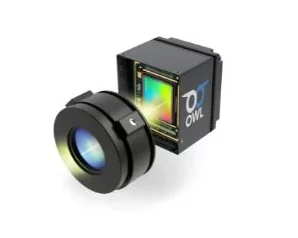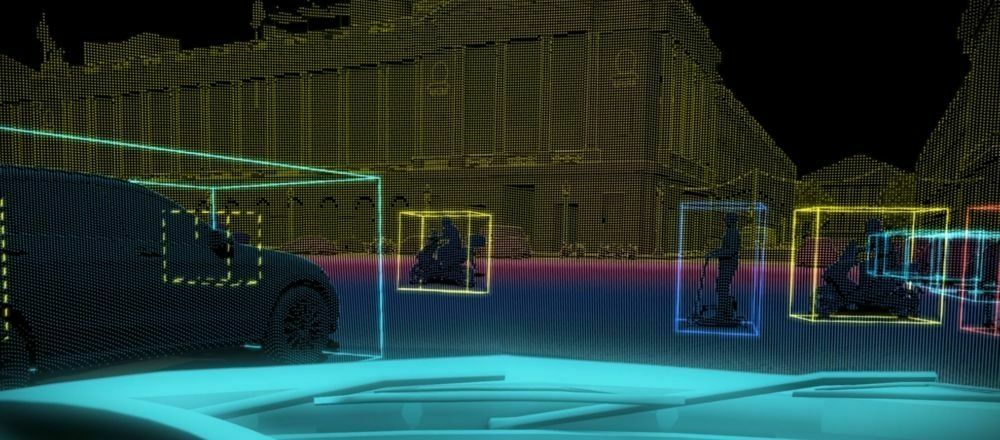
Companies say thermal imaging camera, lidar sensor to improve pedestrian, all-weather driving safety
By onTechnology
With advanced driver assistance system (ADAS) and artificial intelligence (AI) technology at the forefront of vehicle design, safety, and collision repair, two automotive technology companies have won accolades in the 2023 Best of Sensors Awards.
Owl Autonomous Imaging (Owl AI)’s 3D High-Definition Thermal Ranger Camera with Computer Vision won the Optical and Camera category of the awards program. The winner of the Automotive/Autonomous category is Valeo with its lidar sensor, SCALA 3, for self-driving vehicles.
Owl AI says its Thermal Ranger combines the latest thermal camera hardware and AI technology that not only can “see” warm objects like humans, animals, and bicyclists on the road but can also classify what and how far away they are and then have the vehicle hit the brakes or steer around the object.
The Thermal Ranger’s panoramic capability provides HD imaging and precision ranging representing an improvement in resolution and cloud density of 150 times that of lidar, Owl said. The camera uses proprietary AI deep learning and foveal optics to extract dense range maps from radiated heat signatures without illumination.
Valeo says its SCALA 3 sees what the human eye, cameras, and radar cannot see on the road. It adapts to all light conditions and evaluates the density of raindrops to calculate braking distance accordingly. According to Valeo, SCALA 3 scans the vehicle’s environment 25 times a second and covers more than 200 meters (over 656 feet) ahead with a wide field of vision.
SCALA 3 measures the speed and direction of moving objects, including other vehicles, even when they are no longer in the driver’s field of vision, according to Valeo.
Last year, SCALA 3 was selected by Stellantis to be incorporated into its Level 3 autonomous technology. So far, Mercedes-Benz is the only automaker to gain approval for its Level 3 feature on standard production vehicles in the U.S., and only in California and Nevada.
A report released in December 2022 by Strategic Market Research states that by 2030 the automotive sensor market will grow from its current worth of $24.3 billion to $74.4 billion due to “the increasing need for sensors in hybrids and electric vehicles, increased pressure sensor application in the automotive sector, and a considerable rise in customized automotive electronic devices.”
Strategic Market Research named Valeo as one of 10 “key players” in the automotive sensor market.
For more than 20 years, the Best of Sensors Awards — presented by Fierce Electronics and Questex’s Sensors Converge — has shone a spotlight on the best and most innovative products, technologies, teams, and people in the sensors industry, Sensors Converge said.
“Throughout the world, government agencies and industry organizations are in the process of developing and implementing automotive safety regulations that will force vehicle makers to adapt new safety and night-time driving technologies that are much more effective than those in use today,” Sensors Converge wrote.
During the awards ceremony held last week in Santa Clara, California, Sensors Converge Sensors and Electronics Technology Senior Director Charlene Soucy congratulated the winners.
“Each year we are continually amazed at the innovations and achievements the award winners have created,” she said. “We are excited to honor them as the best of the best in the industry.”
In August 2022, only four of 23 vehicles examined aced the first nighttime test of pedestrian automatic emergency braking systems conducted by the Insurance Institute for Highway Safety while more than half earned a basic score or no credit.
“Pedestrian safety, especially for night-time and urban driving, is THE critical milestone for the automotive industry’s next-generation vehicles, and we are honored to be recognized by Sensors Converge & Fierce Electronics for the impact of the problems we seek to solve,” said Chuck Gershman, CEO & co-founder of Owl Autonomous Imaging.
Submissions were judged based on the value to the marketplace, the impact of the problems it solves or issues it addresses, and the uniqueness of the design, according to Sensors Converge.
Images
Featured image credit: davidf/iStock
An Owl Autonomous Imaging (Owl AI) thermal imaging camera is shown. (Credit: Owl AI)
A picture shows what Valeo’s SCALA 3 lidar sensor sees. (Credit: Valeo)

